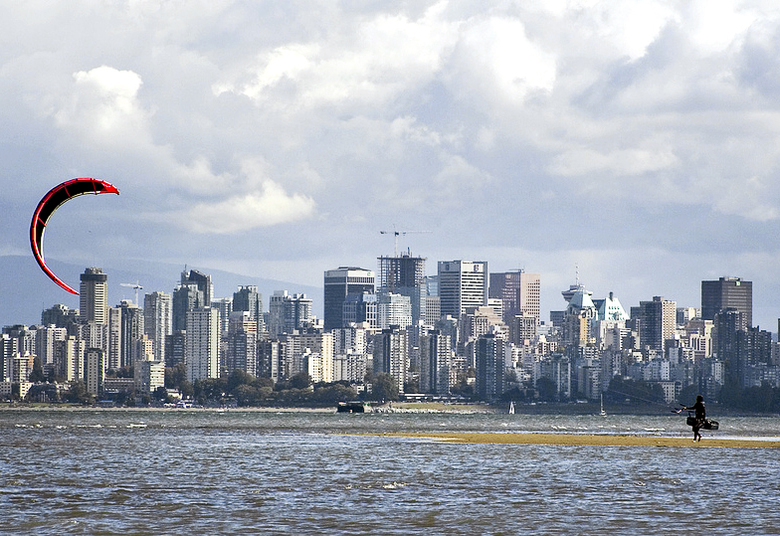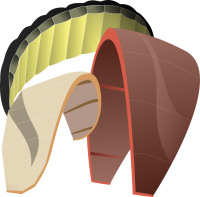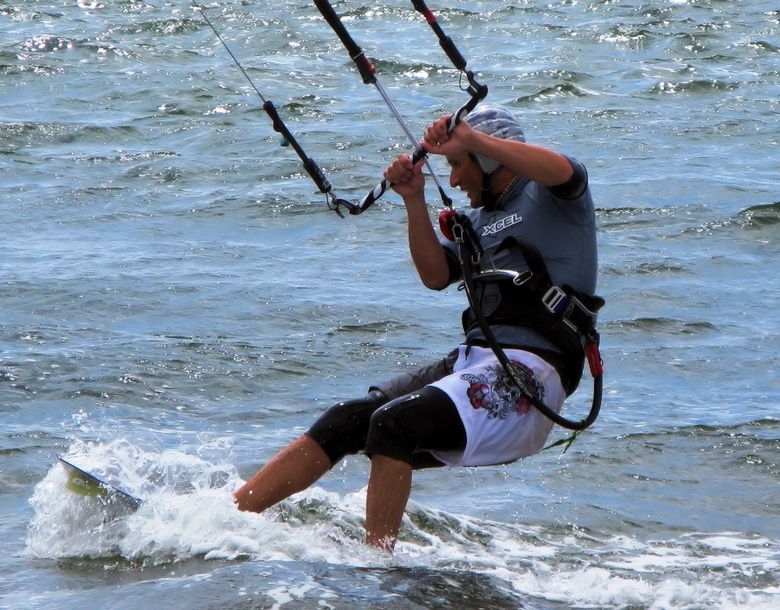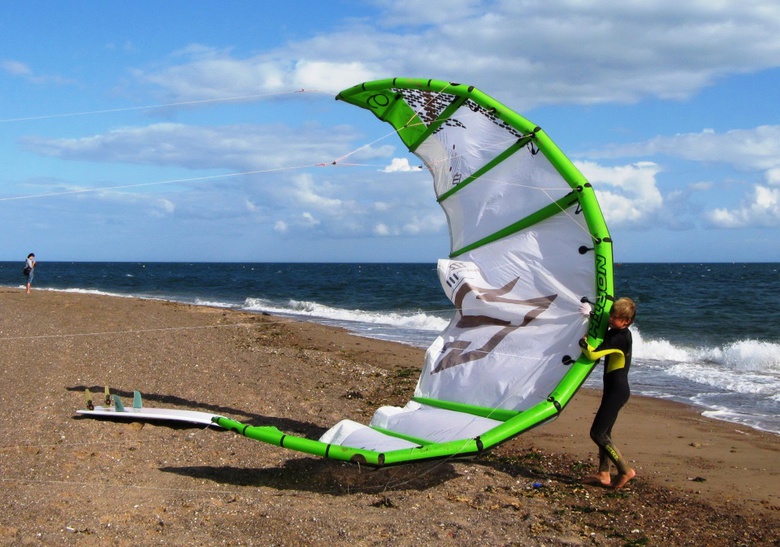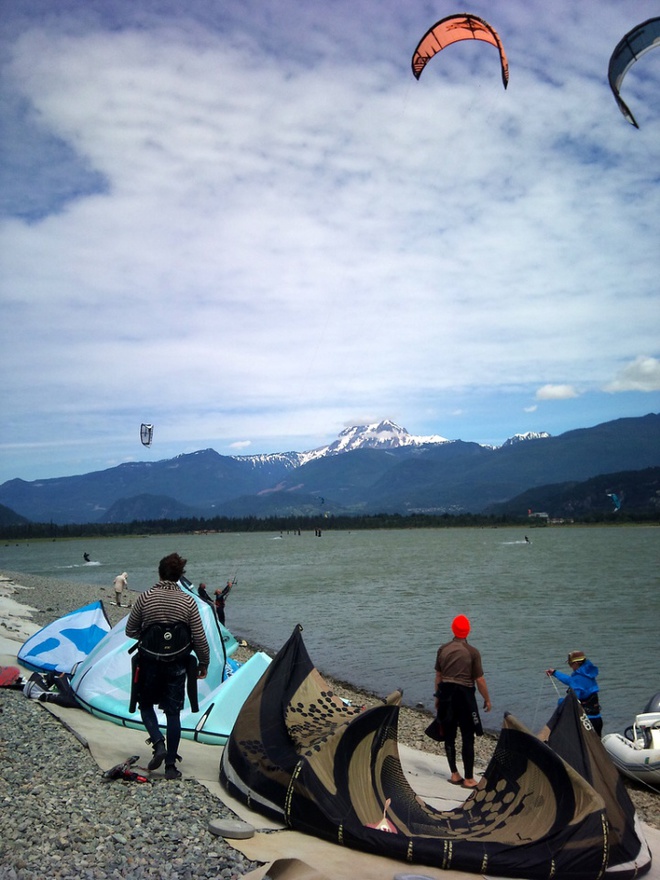 Kiteboarding in Vancouver by Alfred Hermida
Kiteboarding in Vancouver by Alfred Hermida
An essential part of summer is having fun in the water. Water sports have been part of Vancouverites’ summer routines for a long time. The proximity of the ocean and numerous lakes helps create ideal conditions for individuals and families to hit the waters of BC.
Kiteboarding History
This sport is for the most adventurous. Kiteboarding is a mixture of snowboarding and flying kites — only you don’t ride on snow, but water, and you’re not pulled by downhill gravity, but propelled across the water by a kite that you control instead. Sound exciting? It is!
The first kites appeared in China thousands of years ago. In 1826, George Pocock introduced a new type of kite that was more easily controlled, laying the foundations to something that later developed to the kite we use today. Today’s kites are in the shape of an airplane wing, and they started to become popular in 1990s. The last step toward the kiteboarding experience was figuring out how to launch the kite into the air, when in water. These techniques vary greatly, but the most important thing is that you have the means of relaunching the kite now. If you’d like to read a bit more about the history of kites, here are some interesting suggestions.
What Equipment Do I Need?
Kiteboarding is a sport that requires patience, since you have to train for at least a week to master the technique up to the level where you’ll be able to kiteboard independently and wherever you (not the kite) want. First, you should start with a trainer kite to learn how to fly it properly. This basic kite costs around $200. Afterwards, you’ll need a bigger kite and full gear package. If you decide to buy your own kite, harness, control devices, and board, you should be prepared for prices around $2000.
Kites
 Kiteboard by Wikimedia Commons
Kiteboard by Wikimedia Commons
There are three different attributes to your kite that you need to have. Relauncheability, in order to be able to relaunch the kite from the water; performance, which is measured by how much weight can your kite withhold; power control, ability to control movement and dynamics of your kite. There are four main types of kites:
- Inflatable kites:
Thanks to excellent wind range, easy jumping, and a variety of models, inflatable kites dominate the kitesurfing market. This type of kite has an inflatable leading edge and five or more inflatable battens to give it a permanent “crescent moon” shape.

Illustration of Inflatable(R) Bow(L)
and Foil(T) Power kites
- Flat Inflatable kites (Bow kites):
This type consists of a bridle on the leading edge and a flat bow profile that, unlike in classic inflatable one, allows it to depower, and offers larger wind range together with easier relauncheability.
- Framed single skin kites:
Consisting of leading-edge fibre glass or graphite, one main batten in the center, and a number of thin battens along the chord to give the kites the permanent shape, this kite type is a bit harder to launch from water, but after a bit of a practice, it shouldn’t be a problem.
- Ram air foil kites:
These kites have no rigid structure, and their shape forms while flying. They also possess a safety valve to prevent the air escaping after the kite falls down. They are, however, a bit harder to relaunch.
Lines
Usually, kites already come with lines and bars that you need already attached to the kite. Kites usually use four to five Spectra or Kevlar lines. The standard length of these lines varies from 25 to 30 meters. This instructional video can give you an idea on how to manage your lines.
Control Devices
The most common set of control systems for a kite is a four-line control bar for a four-line inflatable, and a pair of handles or a four-line control bar for a four-line foil. Basically, the control device pilots the kite to fly anywhere in the wind window. This window is the area you can see with your eyes when you’re facing straight downwind. Here is a picture of the inflatable depowering system to give you an idea of how it works. Regardless of what type of controlling devices you use, always check for a dependable safety release system. This will allow you to retrieve your kite when you activate the safety system.
Harness
Most kite boarders use harnesses to attach kite-controlling devices to their body. If you don’t want to buy an extra harness and you already have one from windsurfing, that will work too.
 Close up Kitesurfer at Exmouth South Devon England
Close up Kitesurfer at Exmouth South Devon England
Board
- Bidirectional board: This type of board should be approximately 30 cm shorter than your height, although bidirectionals tend to be regulated to a maximum of 140 cm.
- Directional board: This model is usually 20 cm shorter than your height, and directionals tend to be limited to 155 cm.
This video might help you choose the most suitable kiteboard.
 Bow Kite at Exmouth South Devon England
Bow Kite at Exmouth South Devon England
Other accessories
- life jacket
- wet suit
- helmet
- water shoes
Where to Buy the Equipment
- Airtime Boardsports
- Northshore Ski&Board
- Kite Paddle Surf
- BC Kites
Best Schools in BC
- Vancouver Kiteboarding School
- Squamish Kiteboarding School
- Elevation Kiteboarding, Marie
- Strong Kiteboarding
Best Places for Kiteboarding
 Squamish Spit by Andy L
Squamish Spit by Andy L
- Jericho, Spanish Banks: Good with westerly or northwesterly wind. You can start at the Spanish Banks West concession stand with northwesterly wind. For easterly wind, try launching at the foot of Tolmie Street. Kitesurfing is not allowed here during the summer. For wind conditions, check this website.
- Bounday Bay 3rd Ave: Quite good for southeasterly or easterly wind. Pretty enjoyable in the fall, winter, and spring. Not very windy in the summer.
- Tsawessen Ferry Terminal: Good with northwesterly, westerly, and southwesterly wind. Find the frontage road on the south side of the ferry terminal causeway.
- Boundary Bay 72nd Ave: Great when the tide is above 12 feet. Winds of all directions work fine over here. It’s a fine place for beginners because it’s shallow.
- Squamish Spit: Good all summer when hot weather causes Southerly inflow. The sandbar shows at tides below five feet.
- Crescent Beach: Good with southwesterly, westerly, and northwesterly wind. It’s best when the tide is above six feet, or else you must walk a long way to get to the water.
- Porteau Cove: Light wind during summer months. Not as windy as Squamish. Launch area is a rocky, barnacle-covered beach.
- White Rock: Good for southwesterly and southerly winds.
- Bellingham: Good for southeasterly, southerly, and southwesterly winds. Park along the shoulder before the train trestle.
Interesting Blogs to Go Through
http://waitingforthewind.blogspot.com/
http://www.kitevc.blogspot.com/
http://www.kiteboardingevolution.com/Kiteboarding-blog.html
http://www.sbckiteboard.com/blog/
http://blog.kiteboarding.com/
http://www.jeremieeloykiteboarding.com/en/
http://blownkiteboarding.com/category/blown-kiteboarding-blog
